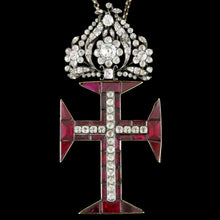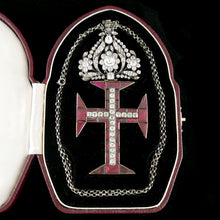Portuguese Order of Christ, circa 1780
Adding product to your cart
Height: 10cm (3.8in)
Clear and red paste on foil backed silver cross with foliate paste set suspension on period chain. Contained in modern velvet lined case.
Provenance: William Sturgis Bigelow, M.D., (1850-1926)
Read more
William Sturgis Bigelow (1850-1926) was the scion of a Bostonian medical family and graduated from Harvard in 1871. After studying under Louis Pasteur, he travelled in the Far East and lived in Japan, becoming an authority on Oriental art. Funded by a massive fortune from his mother, he amassed a vast collection and in 1911 presented Boston Museum of Fine Arts with 25,000 items of fine and applied art. A long time friend of Theodore Roosevelt, he often entertained the President in his own home on Beacon Hill, Boston.
‘The secretary of the Harvard class of 1871 once wrote to William Sturgis Bigelow requesting some news, ‘or a story.’ Bigelow replied, "Story? God bless you, I have none to tell, sir. Since '81 I have spent about seven years in Japan, when [sic] I saw a great many folks of high and low degree, got together some things of various sorts for the Boston Museum of Fine Arts...and learned a little about Eastern philosophy and religion. I have neither wife nor children, written no books, received no special honors and I belong only to the regular clubs and societies." This extraordinary understatement combined Buddhist self-abnegation with the inner confidence of an affluent, private, and talented Boston Brahmin. In fact, those "things of various sorts"--numbering, according to one estimate, 26,000 pieces of painting, sculpture, ceramics, and manuscripts--formed the heart of one of the world's greatest museum collections. As to the Eastern philosophy, he studied and then embraced Buddhism, as did his friend Ernest Fenollosa, A.B. 1874. Bigelow's 1908 Ingersoll Lecture at Harvard explained "Buddhism and Immortality" in scholarly detail, and was later published. Bigelow was truthful in saying he had no wife or children, but not in denying that he had written books or received honors. Japan awarded him the Imperial Order of the Rising Sun, with the rank of Commander, the highest distinction bestowed in that country on persons not in official life (he wears it in the charcoal portrait above, drawn by his friend John Singer Sargent).’
Source: http://bigelowsociety.com/rod8/wil82311.htm (accessed 7.6.2017)








